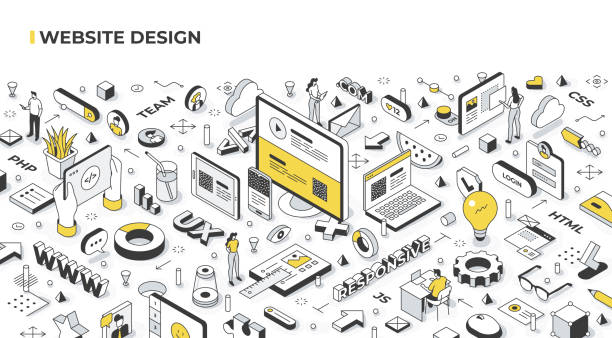
Your company’s website will typically be the primary point of contact between your company and its customers. Expert web design services Australia can establish credibility, improve user experience, and generate direct conversions. Commercial websites, when designed professionally, optimize search engine results, convey clearly, and form the basis for sales, customer care, and marketing. For Australian businesses, web design is not a cost — it’s a strategic necessity that unites channels’ campaigns in one place and converts traffic into tangible actions.
What is the 2025 web design principle?
The most significant emphasis is placed on performance improvement, mobile-first approach, data-driven personalization, and accessibility. Designers adore websites that offer simple, fast, and reasonably well-designed interfaces, enabling customers to use them through voice, touch, and keyboard input. Security and privacy-enhancing functionality grow in importance with developing regulations and customer expectation levels. Very targeted content and technically well-optimized conversion behaviors make websites relevant to various types of users.
What is the step-by-step web design process for Australian businesses?
Requirements for building a website for an Australian company include a systematic approach to guarantee quality and business objective alignment. Every phase contributes significantly towards developing a site that is interactive and performance-based.
![]()
1. Discovery and Strategy: Development of Australian business websites starts with strategy and discovery. This involves stakeholder consultation, asset measurement, setting definite aims, and allocating KPIs and deadlines to create confidence that the website achieves business results.
2. Information Architecture: Next is information architecture and wireframing. Designers develop basic sitemaps and wireframes to determine user flow and page organization, guiding visitors around the site seamlessly.
3. Visual Design: Visual design follows, wherein high-fidelity mockups are crafted precisely to represent the visual image of the brand, e.g., color, font, images, and other visual aspects, to project a professional and uniform look.
4. Development: Development follows, wherein front-end code is written that talks to the site, a CMS or online store platform is chosen, and third-party tools like payment gateways or CRMs are brought in to infuse functionality.
5. SEO and Content Creation: Next, content and SEO, in the form of audience-readable content, metadata, alt text, and accessibility attributes, are utilized to make the site both search engine-friendly and user-friendly.
6. Quality Assurance: Pre-launch testing is conducted to ensure validation of performance, cross-browser compatibility, accessibility, and security so as to provide a hassle-free user experience.
7. Deployment: Deployment involves putting the site up with working DNS, hosting, and backups, along with a rollback facility.
8. Continuous Development: Finally, maintenance ensures that the site is in a prime state by doing A/B testing and deploying new features based on user activity.
A well-defined web design process not only makes deployment easy but also allows companies to develop a site that performs properly.
Why do Australian businesses need professional web design services in Australia?
Small to medium-sized Australian businesses are prone to underestimating the ROI of high-end website design services Australia. Beside from the fact that professionally designed sites attract visitors, they also turn them into consumers through usability, loading speed, and trustworthiness. Great providers also offer local SEO experience, e-commerce protocols, and Australian regulatory requirements, such as accessibility protocols. They also help develop scalable architecture and transparent analytics reporting to measure progress and support growth.
● Faster time-to-value with proven templates and development pipelines.
● Expert guidance in conversion optimization, security, and upkeep.
How to hire the right web design company in Australia?

When selecting the best web design company Australia, look for their technical competence, design, and service culture. Begin with the portfolio to find out the industry experience of the company and see if its appearance is proportional to your brand. Interview potential collaborators to understand their workflow, performance indicators, and the platforms upon which they excel. Please find out how familiar they are with Australian compliance levels, access, and local search engine optimization. Investigate any ongoing support, staff training, and services provided for continued support, including hosting, maintenance, and security updates. A responsible partner will provide references, case studies with quantifiable outcomes, and an open working approach where you are included in each process step.
Are affordable website builders the most optimal for startups?
Every startup and small business would prefer an affordable website designer to keep things low-cost and fast. Cheap choices are worth it if the scope is tight and builders deliver a scalable foundation. Look for builders that offer documentation, training, and a plan for what will be secondarily optimized. Ensure your cost-effective web designer uses best practices for optimal performance, accessibility, and SEO, or pay technical debt. Cost-saving upfront with analytics-informed optimization will keep your investment secure as you scale your business.
Which website design company in Australia is right for your business?
When reviewing a website design company, compare prices for sitemap elegance, UX rationale, performance goals, and technical decisions. Please verify whether your recommended CMS meets your editorial needs and whether its architecture scales for e-commerce or international markets by asking for references and measuring outcomes. Check post-deployment SLAs on backups to ensure your investment is protected. Unambiguous contracts, accompanied by training and documentation, minimize risk and enable trouble-free handovers.
What to track once launch and momentum are maintained?
After launch, continue to focus on conversion rate optimization. Conduct A/B testing on headlines and page layout optimization. Maintain a content calendar to produce authoritative posts and landing pages that drive your topic clusters. Conduct regular technical audits to assist in managing performance regressions and security patches. How frequently you catch up with your web collaborator allows you to set priorities, rearrange creative elements, and plan feature roll-out based on intricate feedback from actual users.
What is the function of web design within a digital marketing strategy?

A website is the top sender of SEO, paid, social, and email traffic, so a digital marketing strategy depends on a converting website. Web development improves SEO by giving clean code, logically organized content, good load times, and mobile friendliness. Web development optimizes conversion by minimizing friction through a clear information hierarchy, large calls to action, and minimal checkout or lead capture forms. Design also supports segmentation and personalization when combined with analytics and marketing automation to allow teams to present context-relevant content and monitor campaign performance. When marketing and design collaborate, every channel works better in terms of ROI and more transparent attribution.
How do Australian businesses fund web design?
Australian web design pricing is all about matching short-term expenditures to long-term advantages. Begin by booking priorities ahead of the wish list; these typically include responsive templates, search engine optimization, content architecture, secure hosting, and analytics installation. Add recurring charges such as hosting, domain registration renewal, support retainers, and content creation. For commerce, add payment gateway charges, product data migration, and regular inventory management integration. Decide whether the headless or monolithic approach will be best for growth plans and whether third-party licensing or custom integration will contribute to the initial cost. And finally, remember the cost of ownership: a little incremental cost in a good architecture and expert content works to reduce maintenance costs and improve conversion, making the site an asset over the long term, rather than a perpetual drain.
Conclusion
Australian web designing companies are the foundation of developing a credible, findable, and converting online presence. From acquiring fresh web design ideas in 2025 to embracing a structured web design process, selecting a purpose-built web design firm in Australia, and aligning design with your digital marketing plan, every decision counts. Irrespective of whether you hire an economical website designer or an entire Website design company, maintain scalability, analytics, and user experience in mind to get measurable payback. Plan ahead, test frequently, and build upon it to thrive.
FAQs
What are the most essential things to search for in Australian web design firms?
Look for fast turnaround, responsive design, SEO design, accessibility, solid security, and frequent updates to ensure that your site remains updated and running.
How long does it take to develop an average web design for an Australian business
Timelines vary, but a typical business website will be released within 6-12 weeks from discovery through deployment; high-end e-commerce websites take months.
Will the budget website designer have any capability for building an expandable site?
Yes, most budget website designer experts design expandable sites with future expansion in mind; make sure their approach to CMS selection, integration, and documentation.
How does a website design company enhance SEO?
An SEO expert enhances search engine optimization by utilizing semantic markup and cleanliness, optimizing site speed, creating topic cluster-formatted content, and ensuring mobile-friendliness and crawlability.
How do I gauge the success of my web design investment?
Apply KPI such as organic traffic increase, conversion rate, average session time, bounce rate, and revenue or direct leads generated by the website.
